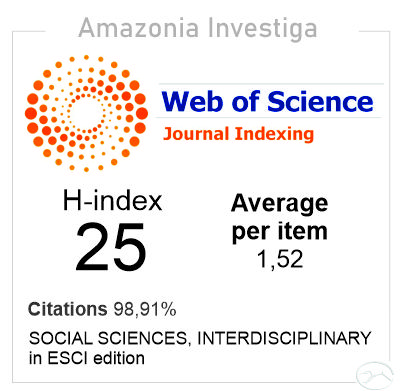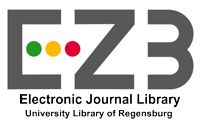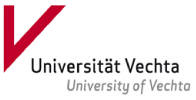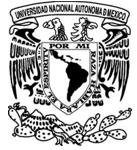Phonosemantic interpretation of lexical units in the context of Russian and Slovak linguocultures
DOI :
https://doi.org/10.34069/AI/2020.29.05.55Mots-clés :
linguocultural code, semantic interpretation, connotation, linguistic consciousness, phonetic motivation, mental field, subject of reflection.Résumé
Phonosemantics is one of the youngest disciplines in the modern linguistics but takes an important part in the intercultural communication. The purpose of the article is to carry out the comparative analysis of lexical units of the Russian and Slovak language systems from the perspective of phonosemantics and philological hermeneutics. There has been made an attempt to study the correlation between the phonetic and semantic motivations of lexemes and paroemias (proverbs and sayings) in the system of the Russian and Slovak languages ??on the basis of the phonosemantic analysis and hermeneutic method. The mechanism for determining the language ?? connotation on the knowledge based system makes it possible to reveal the linguocultural peculiarities of phraseological units, taking into account national-cultural, territorial, ethnolinguistic factors provided the individual’s cognitive abilities are activated. The problem of decoding of semantics in the situation of cross-cultural cooperation is not researched only from the view of the traditional linguistics, but also by means of cognitive activities: perception, presentation, reflection, interpretation. The adequate interpretation of the linguo-cultural phenomena and lexical units is the reflection in the internal communication aimed at the decoding of cultural and language code. In the external communication the reflection of the individual is expressed in the interpretation. The phonosemantic analysis, based on the description of natural-cultural lexical blocks from the view of philological hermeneutics, was revealed at first differences and similarities in Russian and Slovak languages; secondly, it were determined the so-called linguocultural codes. The analysis of lexical units in the Russian and Slovak languages has revealed common and distinctive peculiarities of the languages regarding their phonology and semantics. Perception and interpretation of linguistic units in foreign culture helps to achieve the most important communicative and pragmatic purpose – the establishment of intercultural and interpersonal parity and mutual understanding in the process of communicative interaction.
Téléchargements
Références
Azhezh K. (2003). Man speaking: The contribution of linguistics in the humanities: translated from French.M: Editorial URSS. – 304p.
Bogin G.I. (1990). Phonosemantics as one of the means of reflection development // Phonosemantic researches: interuniversity science research / edited by S.V. Voronin and A.V.Puzyrev. – edition 1. – Penza. – pp. 25-36.
Humboldt V. (2001). Selected Works on Linguistics. - Moscow: Progress. – 395 p.
Ivanova N. K. (2012). The sound and written code of the language: the search for mechanisms of interaction through the prism of the theory of writing // The speaker: research of the XXI century: a collective monograph edited by L.A.Verbitskaya, N.K. Ivanova. Ivanovo State University of Chemistry and Technology– Ivanovo. – 248 p, p.214-224. http://www.isuct.ru/e-publ/gum
Krasnykh V. V. (2002). Ethnopsycholinguistics and linguoculturology: A course of lectures / V. V. Krasnykh. – Moscow: Gnosis. – 284p.
Kulinich M.A. (2017). Theory and practice of intercultural communication: a textbook / M.A. Kulinich, O.A.Kostrov; edited by O.A.Kostrovoy. M: FLINTA: Science. – 248p.
Kvetko P: (2015). English Idioms: Theory and Applications. Vydala Univerzitasv. Cyrila a Metoda v Trnave, Trnava.
Leontovich O.A. (2007). Introduction to Intercultural Communication: Study guide. – M: Gnosis. – 368 p.
Lišková D., Štefan?ik R. (2016). Interkulturelle Kommunikation im Wandel der Zeit. Band 24. Verlag Dr. Kova?. Hamburg. S.9-16. http://dnb.d-nb.de abrufbar
Maslova V.A. (2016). Codes of lingvoculture: study guide / V.A. Maslova, M.V. Pimenova. – M: FLINTA: Science. – 180 p.
Morozkina ?. V. (2015). The cognitive-pragmatic aspect of reflexive discourse: monograph. – Ulyanovsk: Ulyanovsk State Pedagogical University. – 214 p.
Sadokhin A. P. (2009). Intercultural Communication: Textbook. M: Alfa-M; IRFRA-M. – 288p
Šajgalíková H. – Rusi?áková J. (2016). Communication in Culturally Diverse Context. Vydavate?stvo EKONÓM, Bratislava.
Steven P. (2016). Language as an instinct: Translated from English / Edited by V.D. Mazo. – 4th edition. Moscow: URSS: LENAND, 2016. – 464p.
Telia V. N. (1999). Priorities and Methodological Problems of the Study of Phraseological Composition of Language in the Context of Culture // Phraseology in the Context of Culture. – M: Languages of Russian culture. – p.12-24.
Ter-Minasova S.G. Language and intercultural communication / S.G. Ter-Minasova. – 3rd edition. – Moscow: Moscow State University, 2008. – 352p.
Weisgeber J. L. (2004). Mother tongue and spirit formation. – 2nd edition, revised and extended– M.: Editorial UKSS. – 232 p.
Wierzbicka ?. (1992). Semantics, Culture, and Cognition: Universal Human Concepts in Culture-Specific Configurations.Oxford: OxfordUniversityPress. p.3–27.
Wittgenstein L. (2005). Selected Works / Translated from German and English by V. Rudnev. M.: Territotiya buduschego. – 440 p.
Zhinkin N. I. (1982). Speech as a conductor of information. M.: Nauka. – 154 p. Zhuravlev A.P. (1991). Sound and meaning. 2nd edition, revised and extended.–M., Prosveschenie. – 160 p.
Zhuravlyov A.P. (1991). Sound and meaning. 2nd edition, revised and extended. M., Prosveschenie, 1991. – 160 p.

































































.gif)






